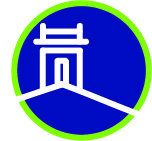HISTORY OF MADISON PRESBYTERIAN CHURCH
In 1821, the first recorded history of Presbyterians meeting in Madison, Georgia was documented in the Church Archives, housed today at Columbia Seminary. For 21 years local Presbyterians met in the court house and at different schools in town. They were given an acre of land in 1825 by the Inferior Court of Morgan County but they did not build on it, choosing to wait and gain numbers and financial stability. By 1842 the members were ready to build. They chose a lot at the corner of South Main and Johnson Street, sold the land they had been given and set about building their church. The Sanctuary of Madison Presbyterian Church was built by a skilled architect and mason named Daniel Killian. He and the church members decided on the Greek Revival style which was popular at the time.
Killian built the church out of brick. He applied stucco over the brick, both on the inside and outside, giving a smooth solid appearance. When the building was dedicated on May 28, 1842, the local newspaper reported: “It is a small edifice, but in its model, and the neatness and elegance of its finish, it is as near our idea of perfection as a building could be made.” The same article describes the exterior plaster as a yellowish color, the side windows were large, clear glass that could be opened and the shutters on the façade were dark green. There were three windows over the three doors. The windows gave light and doors gave ventilation to the small church. The bell in the belfry is original.
The original pews were described as, “constructed for comfort, well painted, and including those in the gallery, will seat three hundred people.” The wainscotting is not original but added later. The floors were all heart pine. Venetian blinds were on the six side windows to help regulate the light. There was a large balcony built for the slaves of members. Similar balconies can be seen in most of the churches built in Madison prior to emancipation. The balcony was accessed from the outside and from the vestibule. The choir was positioned on the back row between the doors. There were no musical instruments. The pulpit area was raised on a platform about 3 feet high. The pulpit and the 3 chairs, made of cherry, are original with the original finish. There were two astral oil lamps near the pulpit and 4 others on the wall for evening worship. The church was heated by two coal burning stoves, one set on the left side, one on the right. Two chimneys can still be seen to the rear of the church.
Outstanding features that have been added over the years include the Good Shepherd Window. In was given in 1908 by Elizabeth Speed, who gave the window in memory of her family - her parents and their four children. Her parents were Terrell and Sarah Speed. Mr. Speed was a merchant in Madison and he was also the third Clerk of the Session serving many years in that position. The window serves to remind us all of their loving service. The six beautiful side windows were a dream of the Women of the Church who held many fundraisers to buy them. Ultimately Caroline Foster, a very active, wealthy member made their dream come true. The large chandelier was a gift of Sue Reid Walton Manley and probably the most famous elements in our worship service are the Communion Service pieces consisting of a flagon, two goblets and two plates. The entire set was taken by Northern troops in November of 1864. The pieces were discovered in Savannah. General Slocum had them returned to the church. These precious pieces of history live in the Cultural Center History Museum but are returned to the church the first Sunday of the month for communion.
As we celebrate the nation’s semiquincentennial (250 years), Madison Presbyterian Church is now 205 years old and has survived all the struggles any church might ever expect to experience. Members have come and gone over the centuries, all working hard in the community to serve and to share. No matter how times have changed, the little church at Main and Johnson stands proud, ready to welcome all who enter and to serve those in need.
Jan Manos, a loyal member of our congregation, has recently published a detailed history of Madison Presbyterian Church. A copy of her book is available in the church library.















































